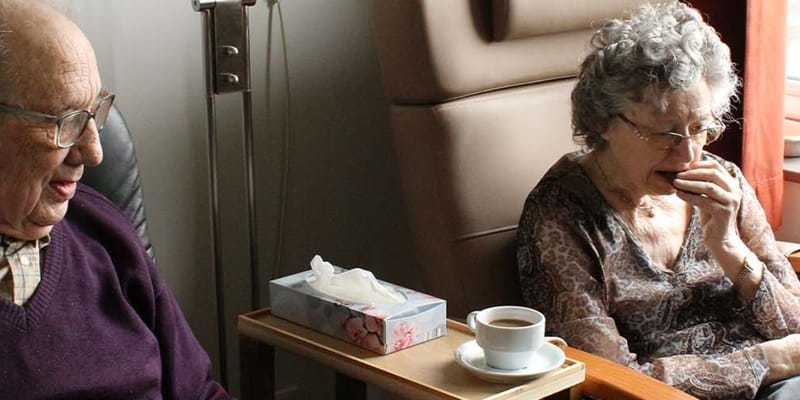
Combination of Assistive Living Technology helps Bernard
The right combination of assistive living technologies helps Bernard gain a higher quality of life and leads to financial savings. Occupational Therapist, GIll Creighton, shares the story.
17. September 2017
Bernard lived with his wife Francis in a small terraced house. They were both in their early eighties and Bernard had always been the dominant partner in their marriage and managed all finances and running of the house. Francis was very meek and timid and had her own health problems. She struggled to manage and Bernard did his best to support her, despite his multiple health issues and frequent admissions to hospital.
Following his last admission, he returned home to downstairs living as he was no longer able to weight bear, and was supported with a double-up care package of 4 calls a day and 2 night warden visits. He spent his days mostly in bed or sitting out in an old armchair, which was too small for him. He was hoisted for all transfers. He was a tall man, a little over 6 foot, and was very anxious about being hoisted. There were issues with space as the room was both his bedroom and their living room. There was no room to store the hoist, which had to be kept in the dining room. At each visit, carers had to move furniture, move the bed, and bring the hoist along a narrow hallway into the room. There was little room for carers to work either side of the bed, and the hoist was difficult to manoeuvre on the carpet. Carers complained regularly of back pain.
Due to the cost of care and the environmental issues around hoisting, it was proposed that Bernard should go into residential placement as this was the cheaper option, His care was fully funded by the council. He and his wife were both opposed to this suggestion. A ceiling track hoist was installed, in-chair slings, a replacement riser/recliner armchair of the correct size with integral pressure reliving cushion, and a Vendlet system were provided. The combination of this equipment meant that there was less risk of injury to carers and reduced anxiety for Bernard. It also meant that the care package could be reduced by 40 minutes a day as there was no need to move the hoist from room to room, Bernard could be transferred more quickly and smoothly, and as a result was less anxious.
He was able to sit out for longer periods in his chair and there was less risk of pressure ulcer development. The financial saving after the cost of the equipment had been taken into consideration was £147.36 per week (£7680.77 per annum), and most importantly, Bernard was able to remain at home.
